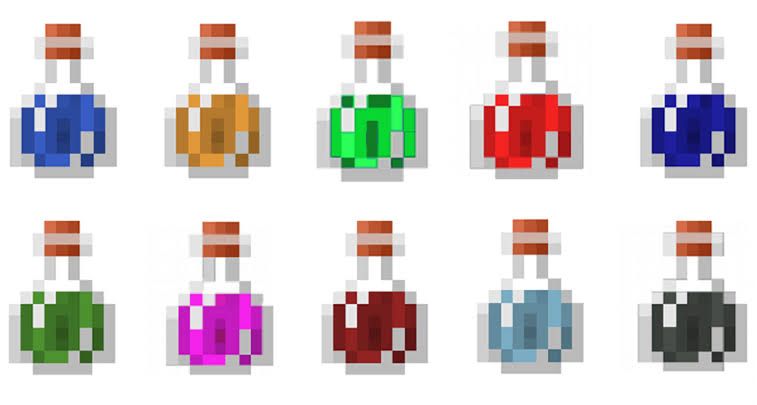1d12 other forms potions can take
2020-01-30 ✢ Potions ✢ Short posts ✢ Tables ✢ Random Tables

- Drink. The classic. Easy to make, but they usually expire in a month or so.
- Tablet. Crunchy. Tastes bad and not as effective as a liquid potion, but they don’t come in smashable glass bottles or expire.
- Bubblegum. Slow-release of the potion over twenty minutes or so. Don’t pop the bubble.
- Aerosol spray/gas. Usually come in a glass tube (snap + inhale) or sometimes in bellows. Difficult to carry, but very useful. Can be piped through tubes, under doorways, etc.
- Syringe. Very effective, but the comedown is usually horrible.
- Powder. Can be snorted, dusted on the body, poured into an open wound. Cheap and easy to carry in an envelope. Unscrupulous alchemists might “cut” it with cheaper potions, with interesting effects.
- Unguent. Grease is the word. Soaks through the skin. Useful for smearing on door handles and so on. Slippery.
- Incense. Affects those who smell it. The stronger the smell, the stronger the effect. Useful for setting traps.
- Tattoo ink. Allows you to store a potion in your skin for as long as you need it. Impossible to break or remove (at least without removing the skin), but anything able to detect magic will notice it. Becomes a normal non-magical tattoo after one use.
- Basilisk. Delivers magic to the brain via the visual cortex. Looks like a tremendously complicated pattern or sigil. The potion takes effect the instant you see it. Defacing the pattern or wearing cut-glass goggles renders it useless.
- Organ. Ask an alchemist to open you up and pop a new potion-release organ inside. Like an insulin pump. 2-in-6 chance your body will reject it.
- Glass globe full of spiders. When the globe is broken, they try to clamber inside the nearest person’s mouth to administer the potion.